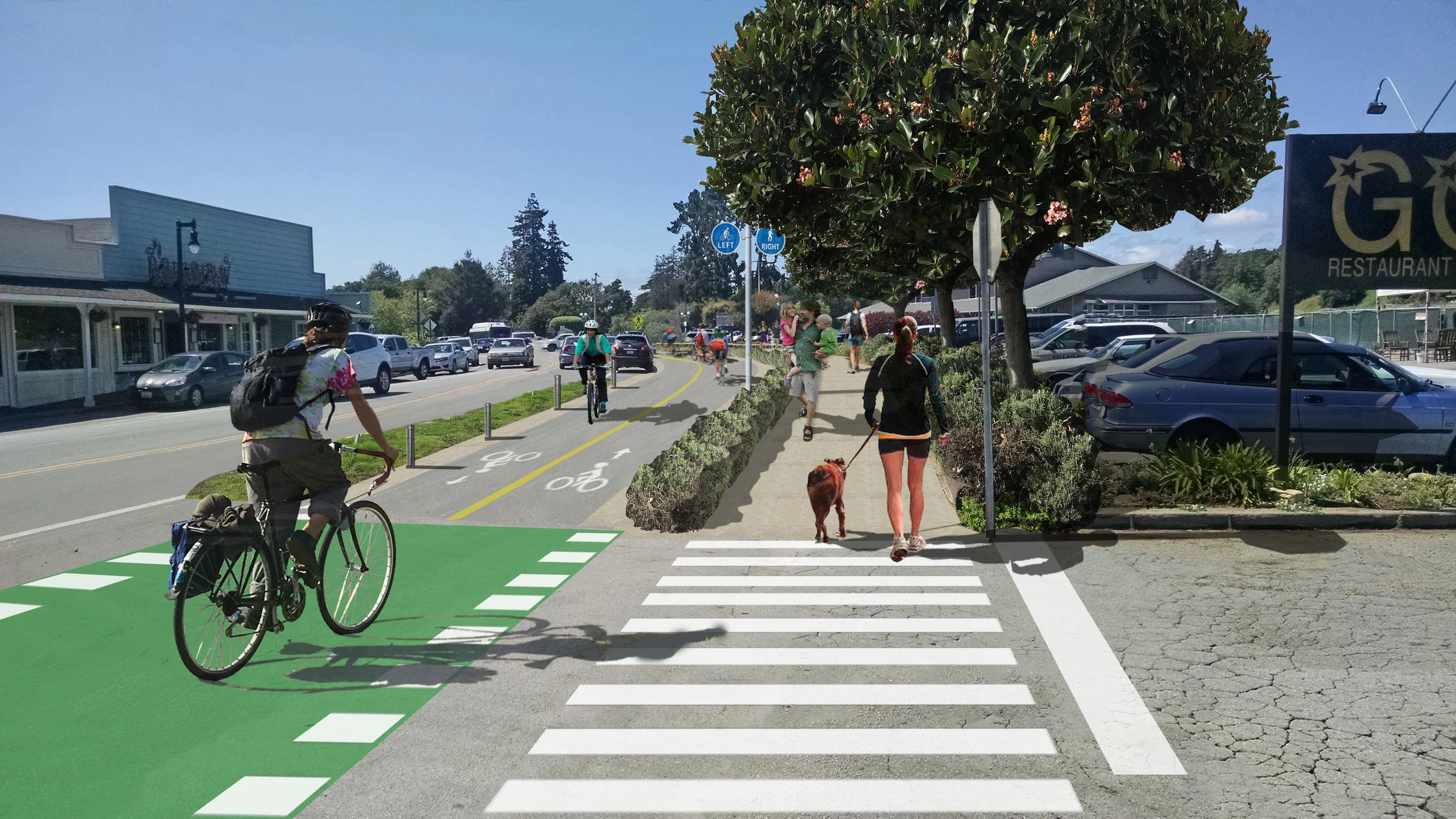IOWA PACIFIC’S PULLING OUT OF THE RAIL CORRIDOR. TIME TO SWITCH GEARS?
By Gail McNulty
On Dec. 13, Iowa Pacific, the rail operator for Santa Cruz County’s rail line, confirmed that they plan to end their contract—more evidence that a train on this old freight corridor does not make sense. We suggest the RTC take advantage of this opportunity to stop planning “excursion-themed services” and start working on achievable, climate-friendly, alternatives to gridlock.
Past studies predicted few would ride a train on this corridor. How can we justify spending taxpayer dollars on rail repairs and the more costly, less effective, rail-with-trail plan when the best use of the corridor has yet to be determined? Meanwhile, our county is one of the most dangerous places to ride a bike in California and METRO—which serves three times the passengers projected in the highest use scenario of the 2015 Rail Feasibility Study—needs 62 new buses.
Greenway is advocating to build a countywide protected bike and pedestrian network while refocusing transit efforts to make our METRO bus system greener, faster, and more popular. On the rail corridor, we support a fiscally-prudent, environmentally-sensitive approach that covers or replaces the tracks with the widest trail possible using existing bridges and avoiding mass tree-removal and major excavating/retaining wall projects. For maximum safety through the Central Reach, we recommend a wide bi-directional wheeled traffic pathway and a separate walkway for pedestrians.
Why not try these affordable, simple solutions and assess their impact before investing in unfunded, large-scale, long-term public works projects that won’t relieve gridlock?
Why Greenway’s approach makes sense:
Other communities have cut through years of red tape by installing “pop-up” bike lanes and busways and collecting quantitative use data and feedback prior to permanent implementation.
Greenway’s safe, affordable, environmentally-friendly plan can be fully-funded by Measure D trail funds. Based on Segment 7 engineering estimates, the rail-with-trail concept will likely be at least twice as expensive.
Unlike the mixed-use rail-with-trail concept, Greenway’s plan avoids on-street detours and safely separates people on bicycles from runners, wheelchair users, and people walking with children or pets.
There’s no funding for a train and given the slim margin of votes for Measure D, there’s little chance our county would vote to raise taxes for a train. If reallocated, rail study funds could build a protected bicycle network.
We believe county residents of all ages will flock to Greenway and a connected, protected bicycle network. 47% of U.S. adults say they would be more likely to ride a bicycle if motor vehicles and bicycles were physically separated according to People for Bikes’ “U.S. Bicycling Participation Benchmarking Report”.
As e-bikes become more affordable, a greenway that safely separates bikers and pedestrians with a protected bike network connecting it to major employers and destinations will make bike commuting viable for many.
Buses are cheaper, go more places, and serve more people than trains.
A modern bus system and protected bike network centered around our existing commercial corridors will enable transit-oriented development with affordable housing helping us to meet SB 375 greenhouse gas reduction goals.
Bike, pedestrian, and bus improvements were the most popular projects in the survey results for Step 1 of the RTC’s Unified Corridor Study (UCS).
Railbanking lets our generation experience a more effective trail while letting future generations make their own choices.
Highway traffic will get worse when auxiliary lane construction begins in 2021.
Installing a low-cost, protected bicycle network and implementing bus improvements outlined in the UCS between now and then, will offer faster, healthier options for many local commuters.
We need to be optimistic.
Unless we install a connected, protected bicycle network, we’ll never know how many might choose bikes over cars when it’s safer to do so. Unless we go “all in” to reimagine our bus system, we’ll never know how many people might ride faster, greener buses.
Let’s hope our community can unite around a common desire to find achievable, climate-friendly alternatives to gridlock and bring a renewed spirit of collaboration to the county transportation conversation in 2018.
Gail McNulty is Executive Director of Santa Cruz County Greenway. An edited version of this commentary appeared in the Tues. Jan. 2 Santa Cruz Sentinel.

